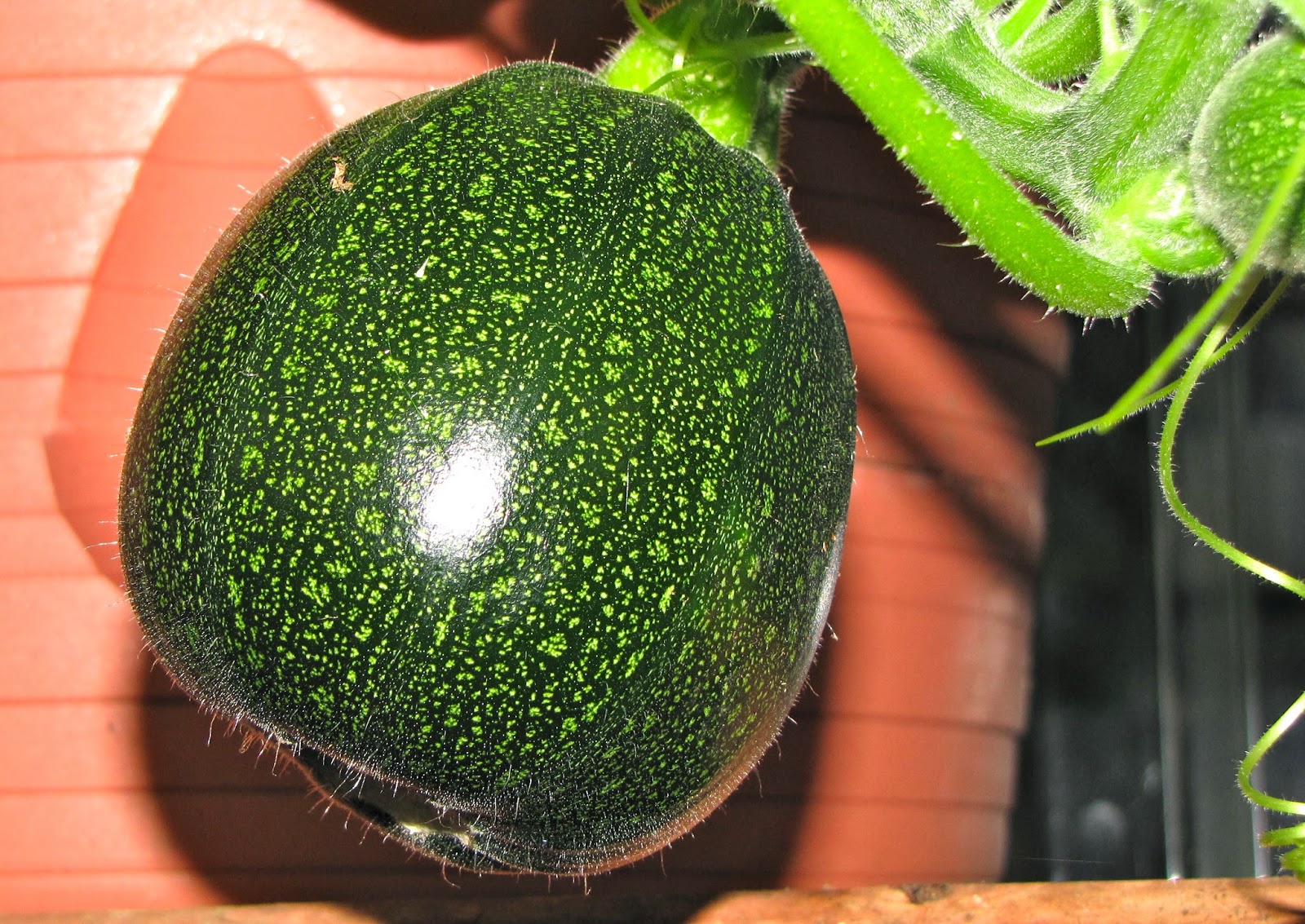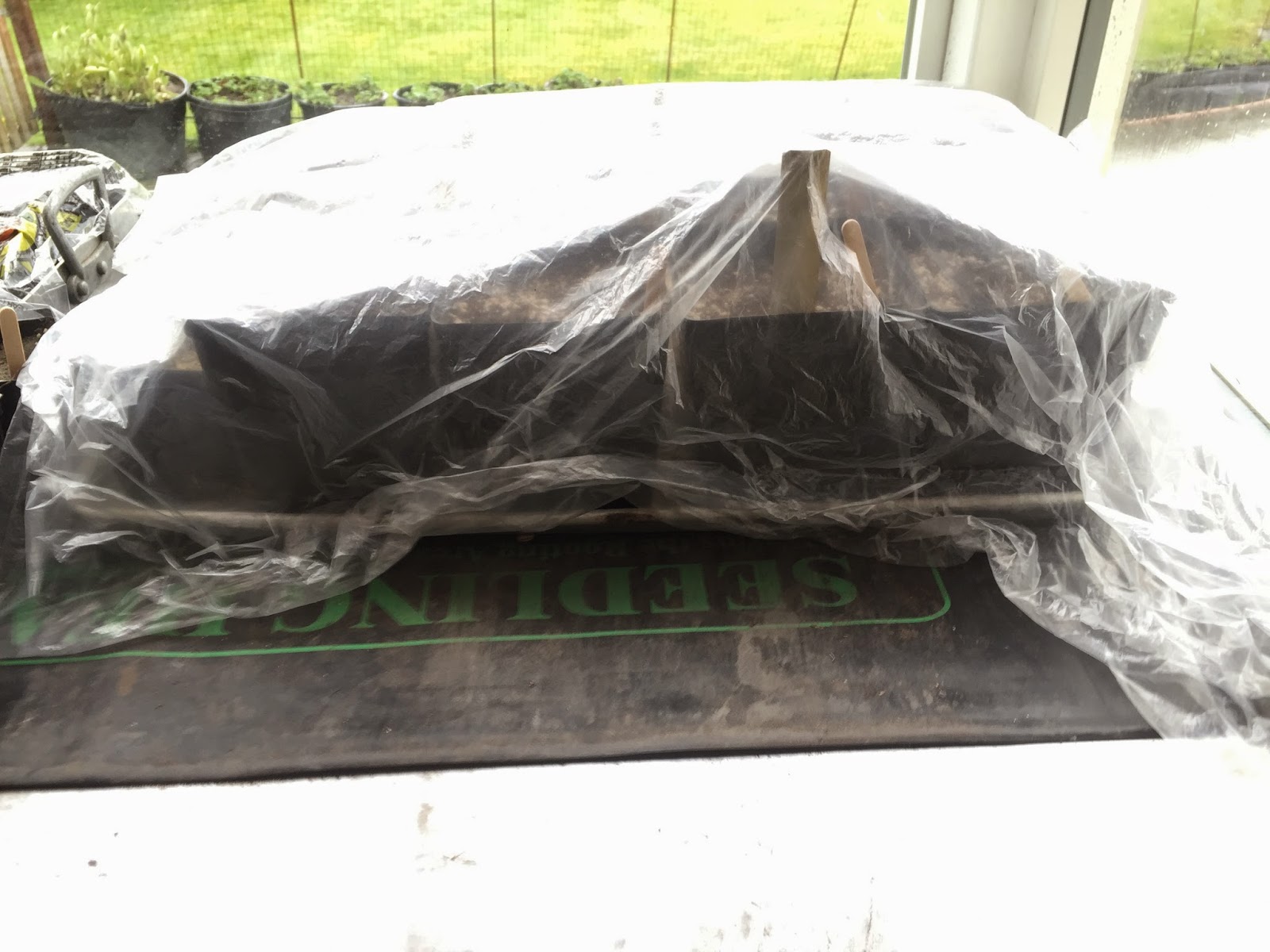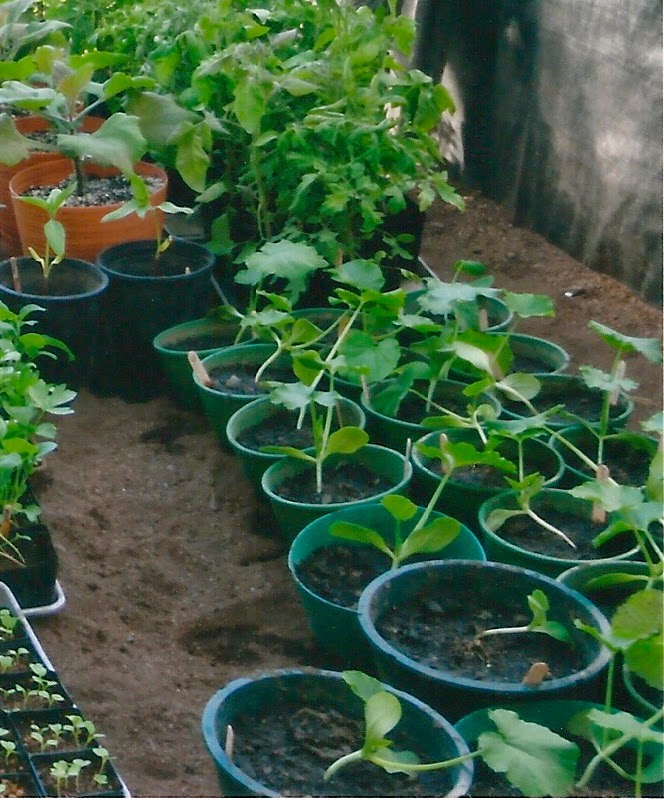Zucchini plants love to be warm and dry. It does not make much sense for anyone to get involved with growing zucchini in cool, wet Sitka. Personally, I only dabbled in this activity until meeting Cliff Lobaugh. We met at a conference in Juneau many years ago. Cliff had truly amazing gardens in a bay outside of Juneau on Admiralty Island. He explained his method of keeping his zucchini plants warm, dry and productive.
Cliff's method was simple:
- Start seeds indoors at the end of April or early May.
- Grow the plants in a warm place for the month of May.
- Transplant outside when soil warms up around June 1st.
- Make a clear plastic tunnel for your zucchini plants.
- Don't water. Just let the rainwater seep in the sides.
What??? Don't water??? Ever???
The DON'T WATER instruction was so difficult for me to follow! My nurturing instinct leads me to believe that the zucchini plants will die of thirst if I don't water them!
Maybe they would not die. I have just never been able to make myself take that chance!
So, I use restraint. When the soil looks very dry, I water lightly with a watering can containing warmish, not cold, water.
I water the soil at the base of the plants rather than getting the whole plant wet.
And, look! Every year, our twelve or so zucchini plants have produced incredibly well! At least this many zucchini have been ready for harvest each week continuously from July well into fall:
LET'S TAKE IT FROM THE BEGINNING
There are many varieties of zucchini from which to choose. You will need to decide which varieties and the number of zucchini plants you would like to grow.
Here are a few we have grown:
 |
| EIGHT BALL |
 |
| BLACK BEAUTY |
 |
| GOLD RUSH |
 |
| THE PALE GREEN ZUCCHINI AT THE BOTTOM IS MY FAVORITE, CAVILI, MILD AND CREAMY. THE YELLOW WITH THE LONG NECK, JUST ABOVE CAVILI, IS SUPERPIK. |
Fill approximately gallon-sized containers with potting soil.
Bury two zucchini seeds about one inch deep, one on each side of the pot, in each of the gallon pots. You are planting two seeds in case one is a dud. It happens. If both seeds sprout into a plant, let them both grow in that container. It will be easy to separate them when it is time to plant them outside.
Place the filled pots in a container or tray.
Now water each pot lightly. You want the soil moist, but not soaking.
Cover the entire tray with plastic and place it on a seedling warming mat or in your warmest location.
After only three days, the zucchini seeds are sprouting! It can take up to ten days.
After the zucchini seeds sprout, remove the plastic cover. No further need for the warming mat either.
Let the starts grow for a month either indoors, in a cold frame or in a greenhouse. They will grow quickly and be quite large by June.
The soil is warm enough by June to plant the zucchini outdoors. When outdoor soil is too cold for zucchini, the base of the plant appears to be melting. The plant dies.
Plant your zucchini plants in tilled, fertile soil about three feet apart. Water lightly after the transplant with water that is not cold, not hot, but just right. Warm.
Cover your zucchini plants with a plastic tunnel or something similar to protect the plants from rain, wind and cold. We used old water line tubing. The tubing is held in place with 2 foot pieces of old rebar driven into the sides of the garden. The tunnel is about 4 feet tall. We made thin slices of the tubing, made a cut in each and use them for clips or fasteners to hold the plastic in place.
 |
| ZUCCHINI PLANTS IN A PLASTIC TUNNEL. THE PLASTIC IS RAISED ON SUNNY DAYS FOR FRESH, WARM AIR AND SUNSHINE. |
It won't be long until you see lots of blooms.
Make up a tempura batter.
Coat the blooms with the tempura batter.
Saute in medium-hot olive oil or deep fry.
Cook briefly until golden and crispy on the outside.
It is best to harvest zucchini when it is small to medium in size in order to enjoy the best flavor and texture. If you are away from your garden for more than a week or have a well hidden zucchini that grows longer than it should...
look what you might be harvesting!
 |
| BIGGER IS NOT BETTER WITH ZUCCHINI LARGE ZUCCHINI HAS A TOUGH TEXTURE |
So, what can you do with all those zucchini you will be harvesting? Besides sharing with friends and neighbors, there are some wonderful and unusual ways to consume these gems.
When reading a new cookbook a few years ago
I learned about a kitchen gadget called a
SPIRAL VEGETABLE SLICER
This slicer is not as heavy duty as I'd like, but it is terrific!
- ZUCCHINI NOODLES -
Among its many uses, the above slicer quickly and easily turns zucchini into spaghetti noodles!
An average sized zucchini makes about one serving of noodles. Once you have twirled as many noodles as you will need for your meal, simply steam the noodles briefly in a pan with a little water. Drain. Make a bed of noodles on a plate. Add your favorite sauce and toppings. The noodles have a great texture and are delicious.
 |
| SPAGHETTI (MADE FROM ZUCCHINI) WITH STEAK AND OLIVES |
Look what became available recently! This is the latest attachment available for KitchenAid mixers. How multi-purpose and wonderful!

- ZUCCHINI SOFT TACO SHELLS -
Wow!!! Is this ever a delicious, nutritious way to eat zucchini! The tacos are simple to prepare.
For a filling this time, I rolled small pieces of deer meat in flour and sauteed in olive oil.
SOME OF THE ZUCCHINI VARIETIES WE ARE CURRENTLY GROWING OR HAVE GROWN IN THE PAST:
Simply place several cooked pieces of meat inside the soft taco. Add more goodies if you like. Fold it over and eat! Seriously good!!!
You can find the ingredients and directions for making these delightful taco shells by clicking on the link below:
- DEHYDRATED ZUCCHINI -
Want to enjoy your zucchini all through winter without freezing? DEHYDRATE! You will likely be surprised at how sweet and crunchy dehydrated zucchini slices are. We have found them to be popular with young and old.
- Eat as a snack.
- Use as a chip with dip.
- Crumble and add to soups, chili etc. It will rehydrate.
- Turn into powder in a blender and add to green drinks!
 |
| DEHYDRATED YELLOW ZUCCHINI IS UNUSUALLY DELICIOUS WITH A SWEET, NUTTY FLAVOR |
Keep dehydrated vegetables in an air-tight container in a cool, dark location.
SOME OF THE ZUCCHINI VARIETIES WE ARE CURRENTLY GROWING OR HAVE GROWN IN THE PAST:
ALEXANDRIA
BLACK BEAUTY
BLACK HAWK
CASERTA
CAVILI
COSTATA ROMANESCO
COURGETTE
DUNJA
EIGHT BALL
EMERALD DELIGHT
FORDHOOK
GIAMBO
GOLD RUSH (YELLOW)
JACKPOT
PARTENON
SUNBEAM
SUNGREEN
SUPERPIK (YELLOW)
ZEPHYR
HAPPY GARDENING!!!




















































